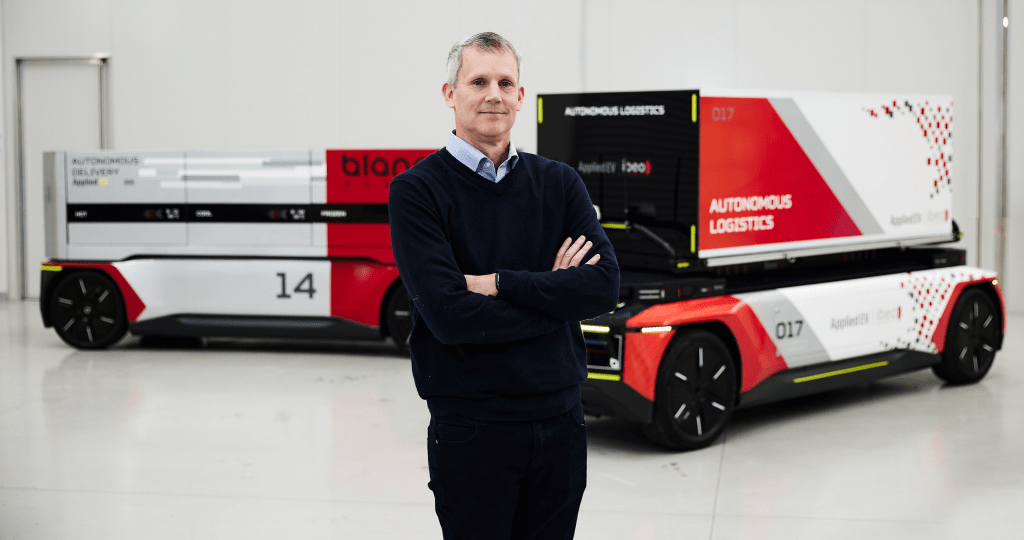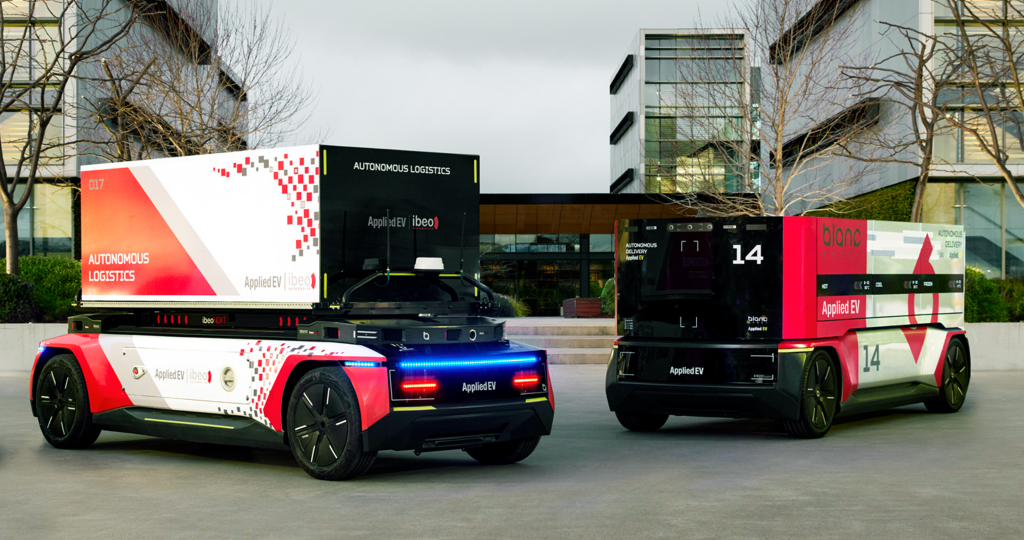As the CEO and cofounder of Applied EV, Julian Broadbent has solved a crucial piece of the puzzle involving autonomous vehicles.

Before starting his own vehicle company in 2015, Julian Broadbent spent two decades in the automotive industry. This included four years working for one of the world’s oldest carmakers in the historic home of car manufacturing – General Motors in Detroit.
Broadbent was in charge of global portfolio planning, which involved looking at how the automotive markets were changing. He became acquainted with Google, Tesla and other tech companies in Silicon Valley working on electric vehicles (EVs) and autonomous vehicles, and he became fascinated by the new technology. He discovered a profound difference between these tech-focused companies and the long-established players.
“In Detroit there’s a car culture and they’re very set in their ways – or at least, they were back then,” he says. “I was sort of prodding at the side of this giant industry and trying to understand how technology could make things different.”
He observed how car companies were still relying on the processes and systems they had built up over a hundred years and were not investing any capital into building software or electronics of their own. When car makers woke up to the fact that there was a real market demand for autonomous vehicles, they couldn’t move quickly enough.
Leaving the mechanical age behind
“Traditional vehicles have evolved out of the mechanical age,” says Broadbent. “They are not configured to run on software – its manual controls were designed for a human to operate. The automakers weren’t fast enough in working out how to build vehicles that run on software, so there was a big gap in the market that no one had forecasted. Everyone had just thought it would all magically come together.”

Back in Melbourne, Broadbent continued working for GM’s Holden Motors, but he couldn’t shake the desire to be part of shaping the future of the automotive industry.
“A tipping point came for me when General Motors celebrated its 100-year birthday, and I saw how the world had changed,” he says. “I felt like it was time for me to explore what that new world was going to look like.”
Applied EV released its first prototype in 2016. The Digital Backbone is a core technology that joins the machine and the software. It can be integrated into an existing vehicle or put into a bespoke autonomous machine.
The elusive dream of self-driving cars
While Broadbent can foresee his technology being used in vehicles that travel along public roads, there is still a long way to go because the natural environment is so complex. So far, an estimated $120 billion has been poured into autonomous driving technology around the world, but the fully automated car is yet to become a commercial reality.
In fact, many players have scaled back their ambitions or abandoned them altogether. In late October, Ford and Volkswagen announced they too had given up on the idea – at least for now.
Replacing the human driver is turning out to be more difficult than expected. A human driver has perceptive skills in terms of what’s happening on the road, and can respond in a millisecond to swerve to avoid a falling branch, a pothole or a pedestrian to swerve. Designing an autonomous vehicle that can respond to every possible situation is extremely challenging.
Applied EV recognized the inherent difficulty several years ago and thus adopted a narrower and more practical focus. Broadbent sees this as a characteristically Australian outlook.
“The rest of the world is very much focused on the ‘end of the rainbow’ type model,” he says. “The Australian style is more of a ‘get it done’ approach. We have gravitated towards creating a vehicle in an environment that we call ‘dirty, difficult, dangerous and dull’, and where there’s a shortage of workers. It’s a practical solution and it’s been well embraced.”
A cabinless car
Applied EV has designed a cabinless vehicle that is used on industrial sites, such as mines. In the process of replacing the human driver with software, it discovered an added advantage: lower capital costs. By removing the human driver, it could also remove safety systems such as airbags, as well as creature comforts like dash panels, trim, seats, carpet and air conditioning. The economics of manufacturing the world’s first autonomous vehicle for industrial applications is significantly different from a car controlled by a human.
“There’s also a tremendous business case for us to offer a product that can do a triple shift,” says Broadbent. “It can work on Sundays and it doesn’t have the capital costs of making a human comfortable.”
Broadbent is excited that high-volume production of its cabinless cars is only around two years away. This year has seen a number of exciting applications announced.
The technology is used by some of Applied EV’s partners on solar farms to measure hotspots. It is hoping to see cabinless delivery vans rolled out soon as well. In June, Applied EV’s self-driving cabinless commercial vehicle was tested on the streets of Oxford in the UK, marking the first time such a vehicle had been deployed on the streets of Europe. The breakthrough was achieved in collaboration with Applied EV’s UK-based partner, Oxbotica.
In September, Suzuki Motors announced that it had taken a strategic stake in Applied EV, which will make it possible for the world’s ninth ninth-biggest automobile maker to use its technology. As a result, Applied EV decided to postpone its planned IPO. A pre-IPO funding round had valued the company at $170 million.
“I can’t say too much on what we will be working on with Suzuki, but what I can say is there are mutual benefits,” he says.